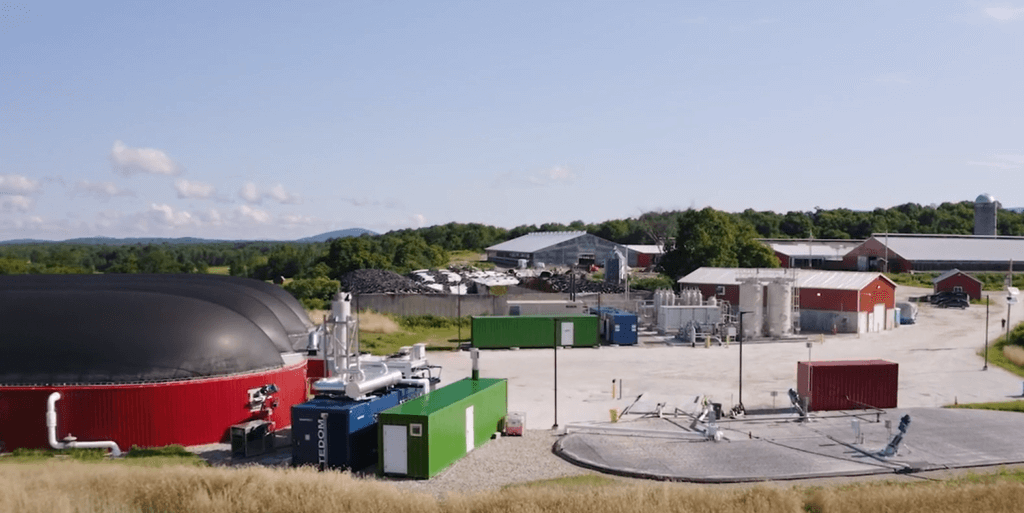
In these biogas plants, the biogas produced in digesters by the anaerobic digestion of organic materials is normally consumed by being combusted in the biogas CHP units. The biogas plant has its own source of electric power (the plant either uses the power for its own consumption or it supplies the power to the grid) and its source of heat is used to control the digestion processes in the digesters. Overall, such a plant can thus significantly improve its overall energy balance thanks additionally to the burning of renewable fuel.
However, a different approach was taken at the Goodrich Farm biogas plant in Salisbury, Vermont, USA, where our partner, the Kinsley company, installed a natural gas-fired CHP unit. Our CHP unit here does not burn biogas but biomethane.
As a matter of fact, this type of fuel is a biogas purified to the quality level of natural gas, and this biogas can then be used as a conventional natural gas. In the process of purification, water, carbon dioxide, hydrogen sulfide and other trace elements are removed from the biogas. The resulting gas has a higher methane content than conventional biogas, making it comparable to conventional natural gas, thus being a suitable energy source for applications which require natural gas.
A major advantage of biomethane over other renewable energy sources is that it can be produced continuously without any dependence on the weather which makes biomethane a suitably superior to other renewable sources due to its easy storage (CNG or LNG). In addition, cogeneration operates at an overall efficiency of up to 90% and is therefore an effective means of reducing the carbon footprint of the given operation of the digesters themselves, which further significantly increases the value of the generated biomethane.
Furthermore, the biomethane that is not used within the biogas plant can be fed into the gas distribution system. In this case, the biomethane is used by the nearby Middlebury College to cover approximately 50% of the College’s consumption to provide heating and cooling of its buildings. In addition, the College has committed to using only renewable energy for these needs by 2028, and this is the first step on its path to carbon neutrality.
Another added value of biomethane is that the surrounding biological waste no longer ends up in landfills but it is meaningfully used to produce biogas or biomethane, which is consistent with Vermont’s Universal Recycling Law No. 148 which bans the landfilling of biological waste from 2020. In addition, organic residues from the fermentation process further serve as a high-quality fertilizer for the local farmers.
Another indisputable advantage is the ability to operate the CHP unit off the main electricity grid, in the so-called “island mode”, which, for example, facilitates the entire system start-up without unnecessary delays. In the case of unplanned outages, a back-up generator is also integrated into the system. The TEDOM D800 CHP unit in our containerized version has been in operation for more than 12 months or 8,595 hours without the slightest problem.



